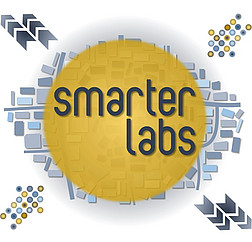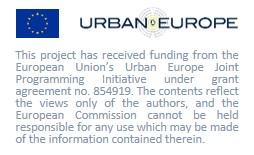Living Lab Experiment Bellinzona
The Living Lab experiment in short: The Living Lab experiment in Bellinzona involves citizens in virtual communities and uses game mechanics to persuade them to reduce car use, favouring instead public transport and slow mobility.
Context of experiment: The experiment can be regarded as a follow up of the GoEco! research project, developed by SUPSI, a project designed and tested as smartphone application aimed at stimulating individual behaviour change. Building on such experience, the City of Bellinzona decided to develop its own app.
Governance context: The City of Bellinzona seeks to improve mobility alternatives to the car to circumvent current problems associated with traffic. In particular, the City has recently developed a plan for slow mobility, starting from a very positive experience regarding home-to-school mobility planning for primary and secondary school students and coherently with the “Programme for the integrated development of transport and urban settlements” of the Bellinzona Region (Programma di agglomerato del Bellinzonese PAB), developed by the Regional Committee for Transport for the Bellinzona area (Commissione Regionale dei Trasporti del Bellinzonese CRTB).
New cycling infrastructure (mainly, cycling lanes) and tangible measures aimed at reducing the use of the car in favour of slow mobility are therefore going to be implemented soon. However, both recent research and statistical surveys emphasize that, though being necessary to promote a change in the dominant mobility patterns, infrastructures alone are not sufficient. Acknowledging this, the City of Bellinzona plans to test a smart and innovative approach aimed at promoting the adoption of slow mobility.
The Living Lab experiment – aim & organization: The Living Lab experiment aims at understanding and changing mobility behaviour (from car use to car alternatives, in particular cycling and walking), exploiting smartphone technologies and gamification approaches.
The entire process is subdivided into two major phases: In Phase 1, participants are invited to co-design a smartphone app for mobility behaviour change that fosters a reduction in use of private motorized means of transport (cars) and favours more energy-efficient mobility choices; then, in Phase 2, they are invited to further reflect on mobility issues in their City and to co-design future mobility scenarios for the Bellinzona area.
The app will exploit automatic mobility tracking opportunities offered by the GPS and accelerometer devices embedded in the smartphones and will leverage gamification concepts and tools based on both intrinsic and extrinsic motivation in order to engage and sustain people towards change: eco-feedback, definition of personal objectives for change, comparison with the performances of other users. In particular, the app will attribute points when alternatives to car are adopted, to be redeemed for bicycle maintenance services or courses organized by local not for profit associations (for instance, ProVelo), vouchers for walking tours and holidays, tickets for cultural events organized by the City itself and similar activities. The idea is that the prizes offered by the system should be as strongly connected as possible with cycling and pedestrian mobility. Overcoming the traditional awareness raising approach, the app therefore will use innovative smart technologies as the main drivers to foster a change in individual mobility behaviour.
Even though research in social and environmental psychology has shown that exploiting intrinsic motivation is more effective in producing a long-lasting behaviour change, only relying on intrinsic motivational factors might not raise the interest of the segment of population that has never had any personal motivation to change. Therefore, to favour a later large-scale diffusion of the app, exploitation of extrinsic motivational elements also was regarded as essential.
The app will be designed with the participants of the living lab and then it will be developed by professional computer technicians. Once available, living lab participants will be invited to test it in their real-life conditions and to provide further suggestions for improvement.
Once a bi-directional communication channel will have been opened between the City and its citizens, discussion in the living lab will be broadened: participants will be invited to take part in workshops aimed at a wider discussion on possibilities to change mobility patterns in the Bellinzona area. First, their perceptions and attitudes on specific barriers and opportunities towards sustainable mobility styles in Bellinzona will be explored; then, they will be asked to brainstorm a set of measures aimed at enhancing opportunities and overcoming barriers for change – that is, to co-create visions and measures for future land-use and transport plans and policies. In such a process, possible ways to use the app resulting from living lab activities will also be investigated.
Expected results: The LL experiment will allow the City of Bellinzona to understand if such smartphone-based approaches are effective and to identify the main opportunities and barriers for change to non-car mobility, gathered from the direct voice of the participants to the living lab experiment, in order to use them to inform future land-use and transport plans and policies.
Beyond the City of Bellinzona, however, the experiment will provide lessons on the design of LL – experiments to anticipate the risk of socio-technical ‘misfit’ and the exclusion of social groups, with special attention for the aspect of behavioural change.
Partners: City of Bellinzona; Uni of AS&A of Southern Switzerland (SUPSI) – ISAAC; Pro Velo Ticino


